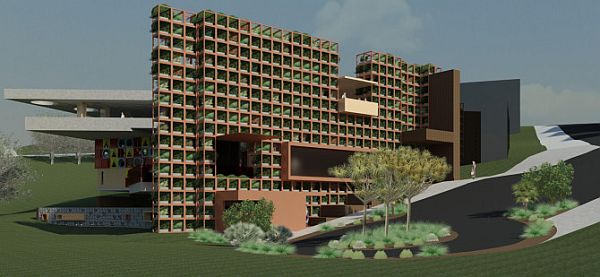
Here is a design that goes well with the complete idea of Kindergarten – the idea of study and play, self learning and amusement and a lot beyond these. This design project in Auckland is nothing less than a dream come true for parents who don’t want their kids to limit their brains to books and classrooms.
Besides this ideological excellence, this design has a lot to offer in concrete architectural terms too. To mention a few – an excellent shape shifting layout which offers the flexibility of closed space to make separate rooms and classrooms, and open space to convert it into a spacious playground. So this is something that ensures use of available area to the fullest.
One thing that just can’t be ignored while looking at this design is the use of Symbology, which is visible everywhere from windows to decor. This uses different geometrical shapes that can serve a purpose of making kids learn, encourage and think about it in a manner that books don’t often do.
Generally, one of the main requirements for a Kindergarten is the spaces of different feel and design, such as open spaces, craft rooms, activity rooms etc. It has quite a few creative and play corners like a fort, a tree house etc. Besides highly interactive designs, teachers have other experiences to cherish, which include the onsite catering and staff areas.
All of these features, when combined with many more, develop a design that could be considered as an ideal space for interactions, games, learning and beautiful experiences. For kids, it’s valuable in many aspects. Of course children are very much fascinated with varied creative structures. It also helps them mold their thinking likewise. This piece of smart architecture not only lets children grow in a creative atmosphere, but also helps them be a part of it. They not only take from it by playing, learning and studying, but also learn to give and maintain the environment by taking care of plants.
One unique feature is the ‘thermochromic’ wall. This wall serves as a drawing board for children who can use their body heat to make various designs. Now, what makes it really fruitful is the phase-change technology that helps convert the body heat into energy. Use of sustainable energy resources like solar panels and water harvesting etc is also a milestone in helping children understand their responsibility towards environment.
Source: Daedal




